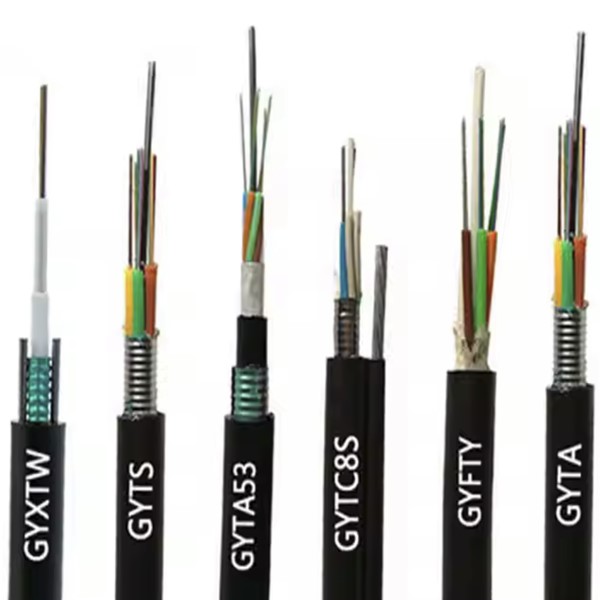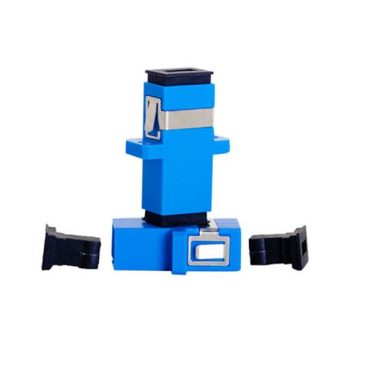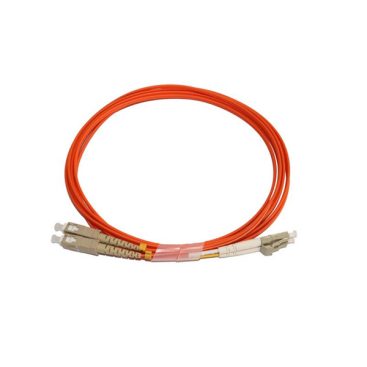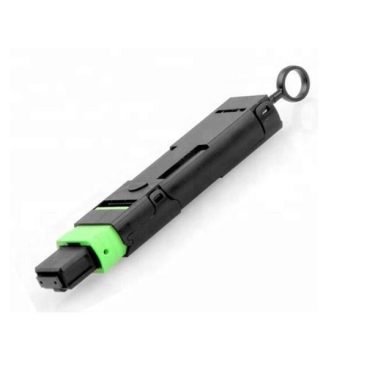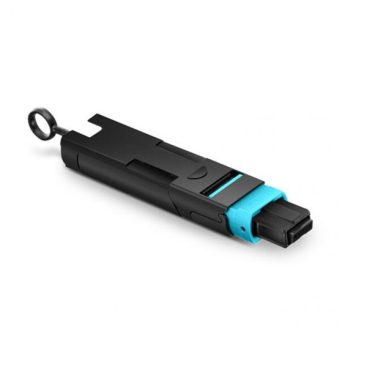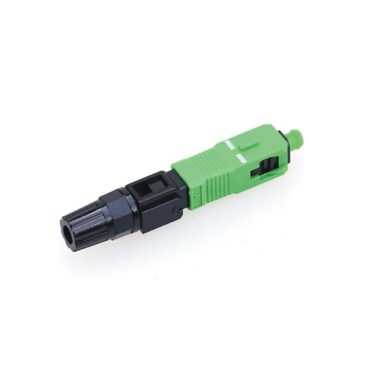- Descripción
- Consulta
- Adjunto
Descripción
GYTZA-146~216Xn Optic Cable is Flame-retardance Stranded Loose Tube Optical Cable (GITZA). As the core medium of modern information transmission, optical fiber cable has been used in many industries such as communications, industry, medical care, and energy
GYTZA-146~216Xn Optic Cable Product Overview
The structure of GYTZA fiber optic cable is that a 250μm optical fiber is sleeved into a loose tube made of high-modulus material, que está lleno de un compuesto impermeable. En el centro del núcleo hay un núcleo de refuerzo metálico., y para algunos cables centrales, una capa de polietileno (EDUCACIÓN FÍSICA) se exprime del núcleo de refuerzo metálico. El tubo suelto (y cuerda de relleno) Se enrollan alrededor del núcleo de refuerzo central para formar un núcleo compacto y redondeado., y los espacios dentro del núcleo se llenan con un relleno que bloquea el agua.. Plastic-coated aluminum strip (APL) is longitudinally wrapped and extruded into a flame-retardant sheath to form a cable.
A flame-retardant outer sheath, extruded over longitudinally wrapped coated aluminum tape, delivers superior fire resistance and environmental protection. This innovative design ensures the cable’s safety and durability in challenging conditions, including areas with stringent fire safety requirements.
GYTZA-146~216Xn Optic Cable Product Pictures



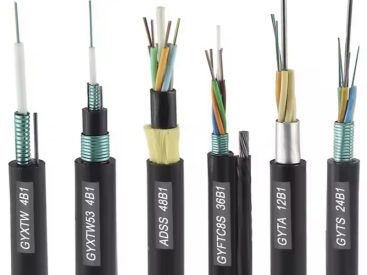
GYTZA-146~216Xn Optic Cable Product Specifications
| Fiber cable model (in increments of 2 fibras) | Number of optical fiber tubes | Number of sleeves | Number of filling ropes | Reference optical cable weight (kg/km) | Allowable tensile force Long-term/short-term (norte) | Allowable crushing force long term/short term (N/100mm) | Bending radius static/dynamic (milímetros) | |
| GYTZA-2~6Xn | 2~6 | 1 | 4 | 101 | 600/1500 | 300/1000 | 10D/20D | |
| GYTZA-8~12Xn | 8~12 | 2 | 3 | 101 | ||||
| GYTZA-14~18Xn | 14~18 | 3 | 2 | 101 | ||||
| GRAMOYTZA-20~24Xn | 20~24 | 4 | 1 | 101 | ||||
| GYTZA-26~30Xn | 26~30 | 5 | 0 | 101 | ||||
| GYTZA-32~36Xn | 32~36 | 6 | 0 | 111 | ||||
| GYTZA-38~48Xn | 38~48 | 4 | 1 | 117 | ||||
| GYTZA-50~60Xn | 50~60 | 5 | 0 | 117 | ||||
| GYTZA-62~72Xn | 62~72 | 6 | 0 | 144 | ||||
| Gytza-74 ~ 84xn | 74~84 | 7 | 1 | 171 | ||||
| Gytza-86 ~ 96xn | 86~96 | 8 | 0 | 171 | ||||
| GYTZA-98~108Xn | 98~108 | 9 | 1 | 198 | ||||
| GYTZA-110~120Xn | 110~120 | 10 | 0 | 198 | ||||
| GYTZA-122~132Xn | 122~132 | 11 | 1 | 229 | ||||
| GYTZA-134~144Xn | 134~144 | 12 | 0 | 229 | ||||
| GYTZA-146~216Xn | 146~216 | 13~18 | 5~0 | 229 | ||||
| Fiber optic type | Atenuación (20°C) | Banda ancha | Apertura numérica | Optical fiber cutoff wavelength | ||||
| @ 850 nm | @1300nm | @1310nm | @1550nm | @ 850nm | @1300nm | |||
| G.652 | — | — | ≤0,36dB/km | ≤0,22 dB/km | — | — | — | ≤1260nm |
| G.655 | — | — | ≤0,40 dB/km | ≤0,23 dB/km | — | — | — | ≤1450nm |
| 50/125µm | ≤3,3dB/km | ≤1,2 dB/km | — | — | ≥500MHz·km | ≥500MHz·km | 0.200±0,015 NA | — |
| 62.5/125µm | ≤3,5 dB/km | ≤1,2 dB/km | — | — | ≥200MHz·km | ≥500MHz·km | 0.275±0,015 NA | — |
GYTZA-146~216Xn Optic Cable Product Features
1. High transmission rate and large bandwidth
Características: The optical cable transmits data through optical pulses, and the frequency of the light wave is extremely high (acerca de 10141014 Hz), which can carry a large bandwidth.
Advantages: It supports high-speed communication (such as gigabit/10 gigabit networks) and is suitable for high-traffic scenarios such as high-definition video, computación en la nube, y 5G.
2. Low transmission loss and long distance
Características: Fiber optics have extremely low transmission losses (acerca de 0.2 dB/km), which is much lower than that of copper cables.
Advantages: Ultra-long-distance transmission can be achieved without relay equipment (single-mode fiber can reach more than 100 kilómetros), suitable for cross-sea and cross-continental communication.
3. Strong anti-interference ability
Características: Optical fibers transmit optical signals and are not affected by electromagnetic interference (EMI), lightning or radio signals.
Advantages: It is suitable for complex electromagnetic scenarios such as high-voltage environments, industrial control, and medical equipment, with stable and reliable signals.
4. Talla pequeña y peso ligero
Características: The diameter of the fiber is only in the micron range, and the fiber optic cable is lighter and thinner than the copper cable at the same capacity.
Ventaja: Save cabling space and facilitate deployment in small spaces such as data centers and urban underground pipelines.
GYTZA-146~216Xn Optic Cable Product and More Optic Cables
Cable óptico retardante de llama blindado con núcleo reforzado trenzado y manga suelta(GYTZA53)
Cable de fibra óptica retardante de llama blindado con núcleo reforzado no metálico trenzado y manga suelta (GYFTZA53)
Cable de fibra óptica retardante de llama trenzado (GYTZ)
Cable de fibra óptica blindado con núcleo reforzado no metálico y funda suelta trenzada (ACUERDO53)
Cable de fibra óptica blindado liso con núcleo de refuerzo no metálico trenzado (AG53)
Cable de fibra óptica sin armadura con núcleo reforzado no metálico y cubierta suelta trenzada (JUNTOS)
Cable óptico de núcleo reforzado no metálico trenzado con funda suelta (GYHTY)
Cable de fibra óptica sin armadura con núcleo reforzado no metálico y cubierta suelta trenzada (LIMITADO)
Cable de fribra óptica blindado de alambre de acero redondo fino trenzado con manga suelta (GYTA53 33)
Cable de fibra óptica blindado reforzado trenzado de manga suelta(GYTA53)
Cable de fibra óptica blindado ordinario trenzado con funda suelta(GYTY53)
GYTZA-146~216Xn Optic Cable Product Applications
- Communication Networks and the Internet
- Backbone network and metro network: Optical cable is the core of building a communication backbone network, supporting high-speed and large-capacity data transmission. Por ejemplo, 400G network upgrades and 10 Gigabit optical network construction rely on new optical fibers (such as G.654.E fiber and air-core fiber) to meet the requirements of ultra-high speed and low latency
- 5G/6G networks: 5G base station fronthaul and backhaul networks require high-bandwidth fiber optic cables, and 6G R&D will further drive innovation in fiber technology
- Fiber-to-the-home (FTTH): Butterfly drop cables (e.g., GJXH, Gjyxfch) are used for home broadband access, supporting applications such as high-definition video and online education
- Data Center and Cloud Computing
- Data center interconnection: Optical cables connect servers and storage devices to support AI computing power, computación en la nube, and big data scheduling. New high-core-count cables (e.g., más que 6,000 fibers per cable) and hollow-core fibers significantly improve transmission efficiency
- High-speed copper cable supplement: In some scenarios, 800G high-speed active copper cables are used in conjunction with optical cables to meet the needs of short-distance, high-density connections
- Power Systems and Industrial Control
- Power communication: All-dielectric self-supporting optical cable (ADS) and optical fiber composite overhead ground wire (OPGW) are widely used in high-voltage transmission lines, with both communication and power protection functions. Por ejemplo, an ADSS fiber optic cable does not require an additional support structure and can be hung directly from an electric tower
- Industrial Automation: Fiber optic cables connect sensors, robots, and control systems in factories to enable real-time monitoring and optimization of production processes
GYTZA-146~216Xn Optic Cable Product Structure

Lo siento, no hay archivos adjuntos disponibles !





